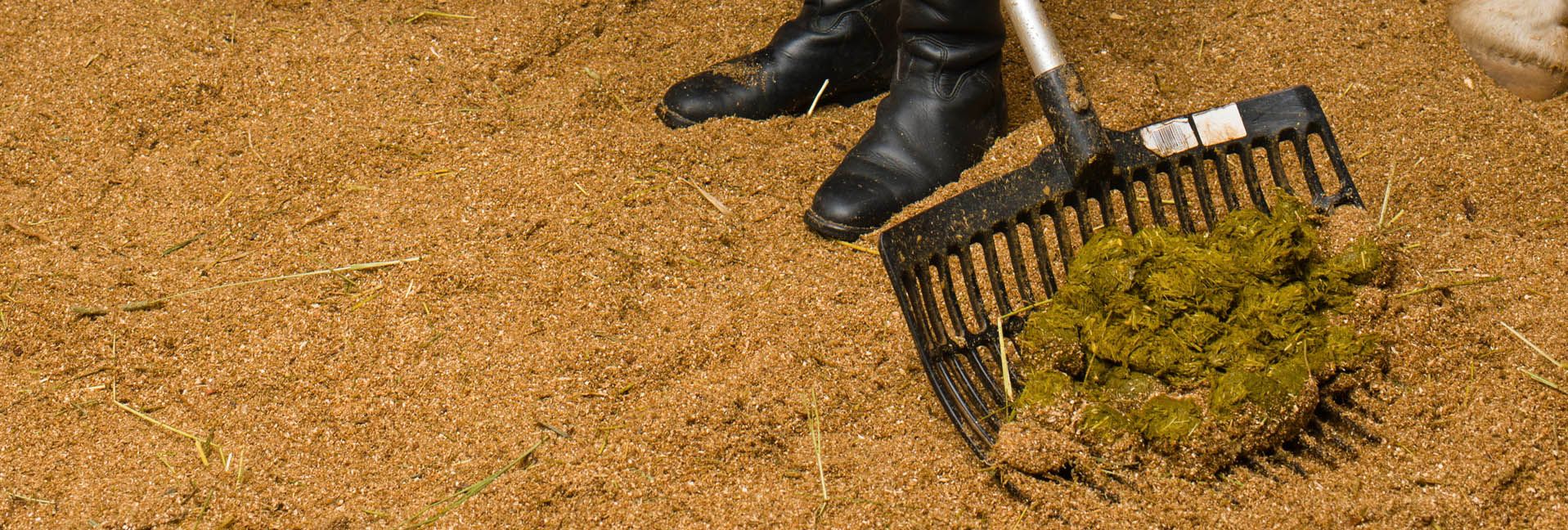Much Ado About Manure - Finding a use for daily droppings


It’s a fact of horsemanship: If you have a horse, you have lots of manure. No one likes to spend a lot of time thinking about it, but depending upon the size of your property and its location, you may have to. As any horse owner can no doubt believe, a single horse can produce as much as nine tons of manure each year. All of it has got to go somewhere.
From the stall
If you have enough acreage, you may consider spreading manure on your pastures, provided a soil test indicates they could benefit from some natural fertilizer. If you go this route, you’ll need to keep horses off the pasture for several weeks to allow the material to dry out and kill any parasites or eggs in the manure. Spread manure in the spring or summer, but not in the winter over frozen ground.
You’ll also need to consider run-off issues if you spread manure in the field. Be sure a heavy rain cannot take it into a nearby water source.
If you don’t have the equipment needed to spread manure in the fields or don’t have enough pasture space to make it work, you may be able to have a local waste management company haul it away. Check with your local authorities to make sure this is permitted. Some such companies will compost it, rather than adding it to a landfill. A nearby garden center may also have interest in collecting loads of manure for composting, though you’ll probably need to be careful not to throw barn-related trash in the pile.
Break it down to compost
You can also compost manure on-site yourself with the right set-up. Composting essentially hastens decomposition, which means manure must be kept reasonably moist and warm to encourage microbes to break everything down. This means creating piles large enough to incubate themselves.
The standard method is to create three bins out of chicken wire or another mesh-type, breathable material in a well-drained area. Fill the bins one at a time with stall muck, putting about 30 days’ worth in each—when the first is topped up, move on to the next bin. By the time you get to the end, the first bin should be done breaking down and ready for spreading, sale, or garden use.
Consider the proximity to your barn and to your neighbors if collecting manure to compost. The pile is bound to attract some bugs, which aid in the decomposition process but obviously can be irritating to animals and people.
Piles need to be at least twice as wide as they are tall to lock in enough heat. Most farm supply stores sell temperature probes that can help you determine whether the pile is staying warm enough to break down, or if it’s getting dangerously hot. The University of Minnesota’s agricultural extension program suggests 140 to 160 degrees is an optimum temperature for composting. Should the pile get hotter than 160, it needs to be mixed to encourage air flow.
Opinions vary on the degree to which piles should be mixed or “turned” to hasten composting. My experience with compost generally is that it can’t hurt, and is a good time to check the moisture levels inside the pile, but it isn’t strictly necessary. Remember, dense materials like sawdust or shavings will affect the heat and carbon balance and may slow down decomposition.
Don’t forget to make sure larger-scale manure composting like this is permitted in your area. Your local cooperative extension agent can help you find out.
In the field
Manure piles in the field can harbor parasite and insect growth, particularly in hot, humid summer. Breaking up the piles in the field with a rake or a chain harrow behind your tractor will increase drying time and hasten the composting. It will also cut down on flies.
In the garden
Want to use manure in your flower or vegetable garden? It can be a great source of nutrients, and is an eco-friendly way to improve soil. As with your pasture space, get soil tests done to determine how much manure is needed to create the ideal planting environment.
You shouldn’t put fresh manure directly into garden soil for planting, however, as it will likely burn plants’ roots. If you’re composting it at the barn, wait for it to break down there. If it gets hauled away or spread, you can take a small bucket aside to age it. Put it in a container or pile with some drainage, but which will not leach run-off directly into the ground with every rain. I use an old trash bin with some drainage holes, and cover and uncover as needed to provide enough moisture and sun. You can throw it in your regular compost bin, but you don’t have to. After about three months, the manure should be old enough to mix in with potting soil or directly into the garden. You’ll be able to tell because it will have lost most of its smell.
Some experts say composted horse manure is actually higher in nutrients than cow manure. For garden use, you may want to consider the bedding material in your stalls. If you bed your stalls on straw or commercially-packaged, bleached shavings, you may want to avoid getting those materials in your compost. Hay is also not great for composting purposes, since it will contain seeds you may not want in your flower beds. I also prefer to restrict manure collection for compost to times I know my horse has not been treated with any medications or dewormers to avoid ingredients which could impact plant growth or worm activity in the soil later on.
Tags:Horse Sense

Acreage Life is part of the Catalyst Communications Network publication family.














